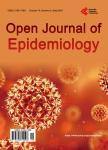Progress Achieved in Gandhinagar District of Gujarat State for Elimination of Malaria, 2007 to 2015—A Case Study
Progress Achieved in Gandhinagar District of Gujarat State for Elimination of Malaria, 2007 to 2015—A Case Study作者机构:District Panchayat Gandhinagar India National Vector Borne Disease Control Programme Gandhinagar India Epidemic Gandhinagar India
出 版 物:《Open Journal of Epidemiology》 (流行病学期刊(英文))
年 卷 期:2017年第7卷第3期
页 面:273-278页
学科分类:1002[医学-临床医学] 100214[医学-肿瘤学] 10[医学]
主 题:Annual Parasitic Incidence Surveillance
摘 要:Background: Government of India has lunched the frame work for eliminating malaria from the country by 2030 [1] [2]. But progressive States like Gujarat has to achieve the target by 2024. The first step in this direction is to bring down the Annual Parasitic Incidence less than 1.0. Under National Vector Borne Disease Control Programme (NVBDCP) various activities for Vector control coupled with complete treatment to confirm malaria cases within 24 hours were given more focus and implemented diligently and effectively. Aim: To evaluate the progress of the efforts being undertaken for malaria elimination in Gandhinagar district. Design: Impact of malaria control efforts in Gandhinagar district covering all areas were studied in detail. Setting: Malaria prone villages of Gandhinagar district where preventive actions were undertaken in an integrated manner during the period of 2005 to 2015. Exploratory: Data pertaining to rural and urban areas of the district covering all PHCs, UHCs and Towns were analyzed and interpreted. Outcome: Reduction in malaria incidence and scaling up of non chemical methods for control of malaria. Analysis: Percentage and proportions. Results: Area specific approach adopted in rural areas of Gandhinagar district by putting more emphasis on good surveillance, ensuring complete treatment to malaria cases within 24 hours and effective strategy for vector control mainly non chemical methods resulted in reducing Annual Parasitic Incidence (API) from 1.96 in 2005 to 0.17 in 2015 in Gandhinagar district. 226 villages (74.83%) out of 302 in the district are malaria free and only 9 villages are having API 1.0. The district aims to achieve malaria elimination in the next five years. Conclusion: Gandhinagar district has made rapid stride towards malaria elimination in a cost effective manner by utilizing the available resources. The strategies adopted by the district can be replicated by other districts and States to achieve the goal of malaria elimina



